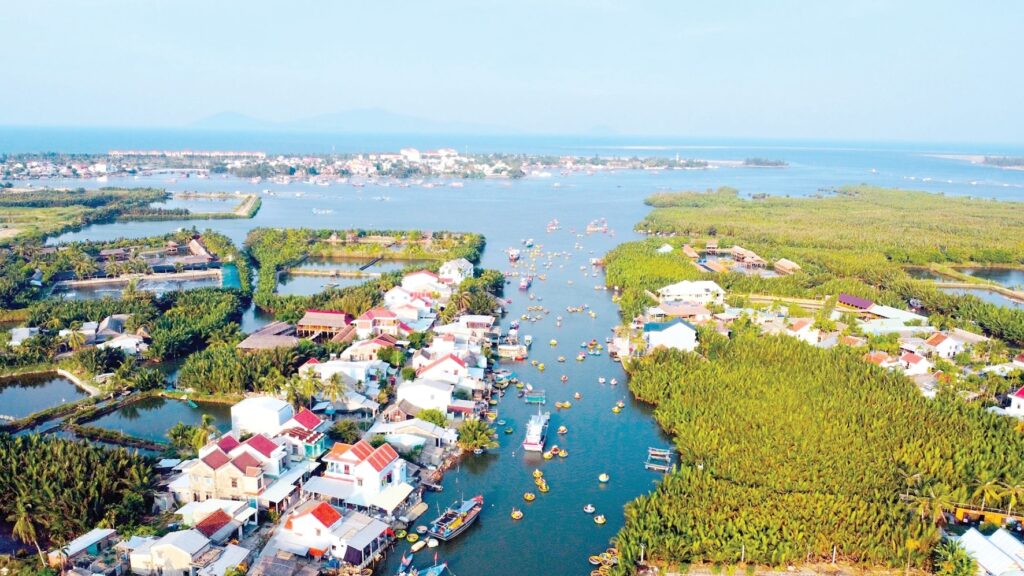As green urban development has become a widespread trend, transforming Tam Ky and Hoi An into biodiversity-rich cities could be a strategic direction to establish a unique identity for Quang Nam’s urban landscape.

The Thu Bon River wetland conservation area will be established.
Tam Ky and Hoi An both boast rich ecosystems. Cu Lao Cham - Hoi An World Biosphere Reserve is the only biosphere reserve in Central Central Vietnam recognized by UNESCO (2009), making it one of Vietnam's 11 biosphere reserves. Spanning from the Thu Bon river to Cu Lao Cham, this reserve represents the characteristic ecosystems of South Central Vietnam, with high biodiversity.
In Tam Ky, the Dam River ecosystem serves as the city's "green lung," regulating the urban environment. Covering a watershed area of 650 hectares, including 200 hectares of water surface, it plays a crucial role in environmental sustainability, daily life, production, and local culture.
Hoi An is striving for sustainable development by preserving the ecosystems surrounding its urban core. In the near future, the Thu Bon River wetland conservation area (3,850 hectares) will be established, contributing to landscape preservation and climate adaptation.
Tam Ky is also advancing biodiversity conservation. In May 2024, the Quang Nam Biodiversity Museum was inaugurated. The city plans to develop Dam River into a provincial-level wetland conservation area, integrating a nature park and community activities.
Three important wetland areas, Vung An Hoa, Bai Say - Dam River, and Trau River and Ben Dinh River, are also located in this region.
With these plans, both Tam Ky and Hoi An are on track to become cities with numerous conservation zones, making the goal of becoming biodiversity-rich cities increasingly attainable.
Translated by Cam Hy